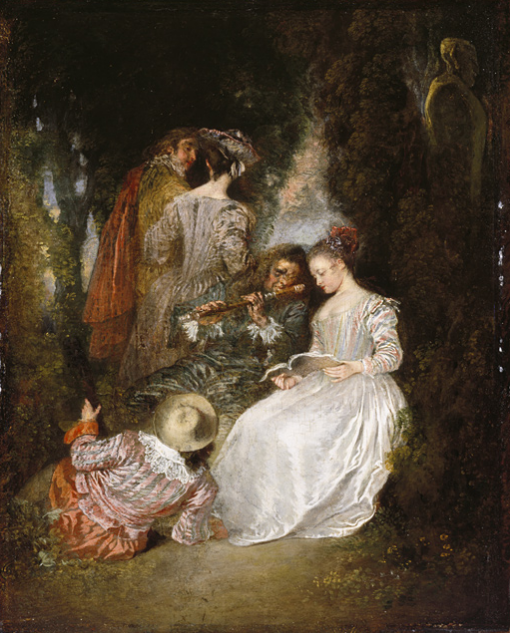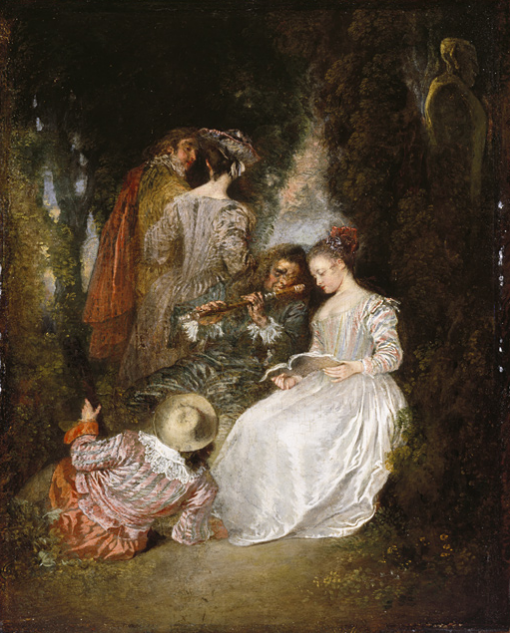For Valentine’s Day, we’ve put together a self-guided tour of works of art inspired by heartache, jealousy, sadness, and tragedy. Come to LACMA tonight for our special Valentine’s evening or print the full tour and bring it with you on your next visit. Here's just a taste of what you'll find . . .
Antoine Watteau, The Perfect Accord
In love, all is not what it seems. The French of the rococo period (roughly the first part of the eighteenth century) enjoyed scenes of aristocrats at play. Watteau excelled at these scenes but often included an ironic or satirical twist. Here, a not-very-attractive older gentleman plays a flute, wooing a lovely young lass. (Note the well-dressed and well-matched couple in the background— they have already hooked up!) The clown in the striped shirt on the left and the statue of Pan on the right imply that the painting’s theme is both erotic and comical. The love scene’s comedic punch line is the title: The Perfect Accord. One might think the wooing couple would make beautiful music together. In reality, French society would have considered the older musician a completely inappropriate match for the beautiful young lady—making this a scene of discord!
 Jean-Antoine Watteau, The Perfect Accord, 1719,
Jean-Antoine Watteau, The Perfect Accord, 1719,Gift of The Ahmanson Foundation
Francois Le Moyne, Diana and Callisto
The scoundrel Zeus (Jupiter), lord of the gods, is at it again. His long-suffering wife Hera (Juno) has quite had it with all his extra-marital affairs. He has taken to disguising himself as all sorts of things (gold coins? A bull?) to curry favor with the objects of his affection. French aristocrats loved these scenes because they were an acceptable way to visually show erotic tales of lovely nude women. Anyway, this rather complicated story comes down to this: Callisto, daughter of a king, has taken a vow to remain a virgin and is serving as one of the goddess Diana’s nymphs. Details differ in various versions, but Zeus manages to disguise himself, separate Callisto from the other nymphs, and impregnate her. Callisto’s pregnancy is discovered when she is reunited with Diana and the others, and the women bathe in the woods, which is the scene pictured here. Furious, Diana expels Callisto from the group. Another long series of events ensues, but the outcome is that the jealous Juno turns Callisto into a bear. Subsequently, Jupiter places both Callisto and her son safely in the heavens, where we know them today as the constellations Ursa Major and Ursa Minor.
Text prepared by Mary Lenihan, Director of Adult Programs, Education and Public Programs Department, Los Angeles County Museum of Art. © 2013 Museum Associates/LACMA




